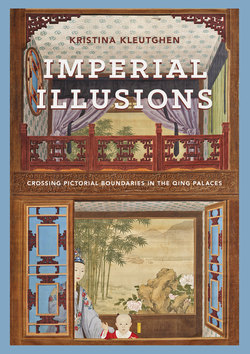Читать книгу Imperial Illusions - Kristina Kleutghen - Страница 50
На сайте Литреса книга снята с продажи.
Оглавлениеthese prints (such as cross-hatching, dramatic shading contrasts for mass and volume, and particular landscape motifs) have been linked to the increased naturalism, changes in the surface texture and tonal contrasts, and semiperspectival renderings of topography found in some seventeenth-century literati ink landscape painting—perhaps even in the emphasis on representing convexity and concavity in the works of Dong Qichang.54
However, as exemplified by the two sample illustrations, the Chinese Jesuit-printed books included almost no shading or highlights to add volume to their subjects, the feature that Ricci (although not a painter himself) felt was the major difference between Chinese and European painting.55 In figure painting, the resulting sculptural, animated quality of the people in European paintings amazed Ricci’s acquaintance Gu Qiyuan (1565–1628), who, after viewing a painting of the Madonna and Child, remarked that “the face seems alive: the body, arms and hands seem to protrude from the panel, and the concave and convex parts of the face appear no different from those of a living person.”56 Gu uses the same terms for concavity and convexity (aotu) that were used to describe the foreign-derived volumetric figural style used at Dunhuang more than a millennium earlier. Although this specific style had long been forgotten, the reapplication of this terminology in another foreign painting context may suggest a continued perception that such three-dimensional painting was inherently foreign.
However, by and large, seventeenth-century literati responded negatively to the aesthetics of European pictorial techniques intended to replicate figures, objects, and spaces as they appeared in reality.57 In a display of cultural politics constructed in response to perceived challenges to literati painting values—and therefore, by extension, to China itself—European paintings and prints became an “Other” against which Chinese painting could be measured and found superior.58 While the absence in Chinese painting of the illusionistic techniques valued in Europe prompted Ricci to criticize Chinese painters and paintings as inferior to European,59 the presence of those same techniques in European painting prompted Chinese artists working in the orthodox style to express their contempt for such things using the same literati discourse established in the Northern Song and reinvigorated by Dong Qichang.
The clearest example of this rejection is from the devout Christian and ordained Jesuit priest Wu Li (1632–1718). Famous for his landscape paintings and one of the Six Masters of the Early Qing (Qing Liu Jia), alongside Wang Hui, Wu had significant exposure to his religion’s foreign style and strong ideological reasons to support it. He spent five months, from late 1681 to early 1682, at Macau’s bustling Jesuit seminary attached to the magnificent Cathedral of St. Paul, where he would have had many opportunities to see European paintings. Even in the paintings produced as part of his work there, he carefully maintained the orthodox style in which he had been educated as a young man, inscribing one such painting with a colophon stating that he took the ancient painting masters as his stylistic models for the work.60 In particular, he disagreed with the European representational focus on realism: “Our painting values originality, not resemblance. We call this ‘inspired and
